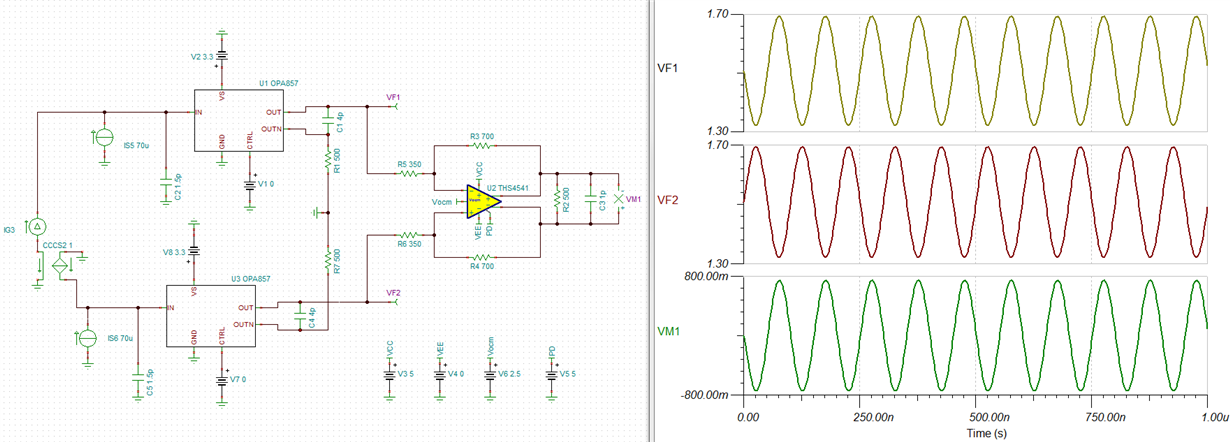Other Parts Discussed in Thread: THS4131, , THS4541, LMH6554, TINA-TI, OPA656, OPA659, OPA657, LMH6629
Hello,
I am currently working on developing an amplifier comprised of different stages. The idea is to convert to voltage the current (High frequency signal) coming from two sensors and amplify the differential signal out of them. The first stage must be a Transimpedance amplifier, this is clear, but after the first stage I am not very sure what is the best way to do it.
I have attached a block diagram of the proposed solution.
The second stage (THS4131) is meant to be used as a buffer and also to compensate the differences between the sensors when there is no excitation.
The last stage is to adjust the differential signal to the input of ADC.
I have a couple of questions:
-Is this topology correct or should I better use a diff to single ended amplifier in stage two to compensate each of the branches independently, then do the differential and finally the variable gain? Any comments about this topology in general or how could it be improved?
- I am a bit confused with the differential output of the OPA857... Should the OUT- output of the two OPA857 connected together and to the Vocm input of the THS4131?
Looking forward to hear your opinion.
Kind regards,



